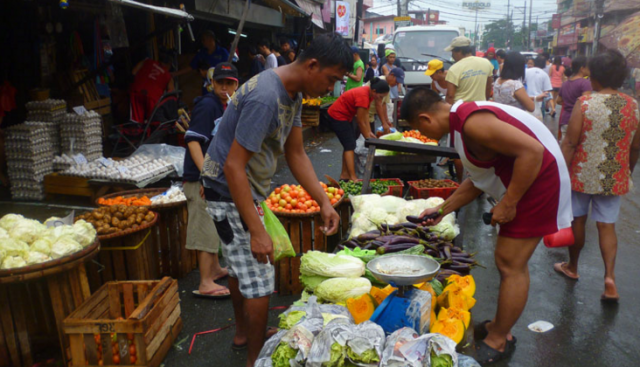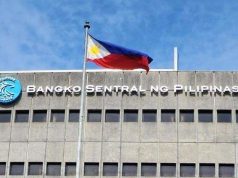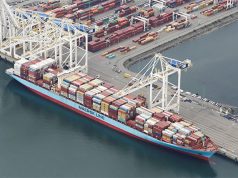MANILA – The general increase in prices of widely used goods and services sustained its pace in December from the preceding month, the government reported on Friday, even as core inflation eased to a four-month low.
Preliminary data from the Philippine Statistics Authority showed that the consumer price index (CPI) rose 3.3% year on year last month, unchanged from November, but faster than December 2016’s 2.6%.
December headline inflation matched the median in an analyst poll BusinessWorld conducted late last week and hovered around the midpoint of the Bangko Sentral ng Pilipinas’ (BSP) own 2.9-3.6% estimate.
For the entire 2017, inflation averaged at 3.2%, well within BSP’s 2-4% target band, at the same time, matching the central bank’s full-year forecast.
“Inflation in December 2017 was due to faster increases in food prices (corn, meat, fish, fruits, cereals), but tempered by lower non-food inflation (transport, housing, water, electricity, gas and other fuels),” the National Economic and Development Authority (NEDA) said in a separate statement.
OUTLOOK
BSP Governor Nestor A. Espenilla, Jr. said in a statement that inflation should likewise settle above above three percent until next year, but would still be manageable. “The BSP expects inflation to remain manageable over the policy horizon as 2017 inflation settled within the National Government’s 3.0 percent ± 1.0 percentage point target range,” Mr. Espenilla said in a statement, even as he said that “inflation is projected to settle above the midpoint of the target range for 2018 to 2019”.
“Robust domestic economic activity, ample liquidity, and well-anchored inflation expectations continue to support within-target inflation,” he added.
“Looking ahead, the BSP will remain vigilant against any risks to the inflation outlook to ensure that the monetary policy stance remains consistent with the mandate of maintaining price stability conducive to economic growth.”
Socioeconomic Planning Secretary Ernesto M. Pernia said in the NEDA statement that the agency sees “inflation over the near-term to remain stable despite pressures that may be brought about by the newly enacted TRAIN (Tax Reform for Acceleration and Inclusion) program, weather patterns, and uncertainties in international oil markets”.
NEDA added that it expects steady supply of key agricultural commodities “within the near term”, with the crop outlook — according to the Philippine Statistics Authority as of October 2017 — showing increases in harvest areas across regions mainly due to sufficient water supply and continued government provision of fertilizer and high-yielding seeds.
Mr. Pernia said “any increases in prices in the first few months of 2018 will be tempered by the expected decline in power rates as capacity fees from power generators fell due to fewer power outages”.
SEGMENTS
The food and non-alcoholic beverages index, which account for nearly 40% of CPI, rose 3.5%, while the index of housing, water, electricity, gas and other fuels, which made up more than a fifth, was up by 3.8%.
Comprising 12% of the CPI basket, the index of restaurant and miscellaneous goods and services sub-group climbed by 3.0%.
Prices of alcoholic beverages and tobacco products grew increased by 6.4%.
“[F]aster price increases in food and beverages in December can be attributed to strong demand amid the holiday season as well as occurrence of typhoon ‘Vinta’ and tropical storm ‘Urduja’ disrupted supply of certain food items,” said Angelo B. Taningco, economist at Security Bank Corp.
“Also, the holiday season may have likely spurred demand for ‘sin’ products and prices in restaurant and other services, thereby raising their price inflation,” he added. “The increase in global oil prices last month was also instrumental in the price hikes in fuels and utilities.”
Price increases were also observed on all other sub-indices namely: transport (2.4%), education (2.2%), furnishing, household equipment and routine maintenance of the house (1.9%), health (2.2%), clothing and footwear (1.8%), communication (0.4%) as well as recreation and culture (1.5%).
Holiday spending was also the main driver of December’s inflation according to Union Bank of the Philippines (UnionBank) chief economist Ruben Carlo O. Asuncion, even as he clarified that price upticks for the so-called “sin” commodities “might have been prompted by the anticipated tax increase particularly levied on tobacco products.”
SLOWING CORE
Core inflation, which is used in determining underlying price trends by stripping out volatile prices of food and fuel, stood at 3.0% in December, easing from 3.3% the preceding month.
It was also slower than the 3.3% and 3.2% clocked in September and October, respectively.
But for the entire 2017, core inflation averaged 2.9% compared to 2016’s 1.9%.
Economists interviewed held varying views on last month’s core inflation, but nonetheless suggested a more stable outlook on prices.
Security Bank’s Mr. Taningco attributed the slowdown to the transport sub-index whose price increase moderated to 2.4% last month from 4.4% in November.
Chidu Narayanan, Asia economist at Standard Chartered Bank, meanwhile, pointed to prices in housing. “Housing inflation dropped to a four-month low of 3.8% year on year, also driving core inflation down in December, after the rise in the past two months,” Mr. Narayanan said.
Land Bank of the Philippines (LandBank) market economist Guian Angelo S. Dumalagan, on the other hand, said: “The drop in core inflation might be attributed to the unexpected appreciation of the peso in December versus November.
The decline in core inflation gives the BSP room to keep interest rates steady for now.”
UnionBank’s Mr. Asuncion agreed, saying the slowdown “indicates a more stable level of prices in the economy.”
“So, in this particular case, the BSP has basis to say that inflation will stay within their target of 2-4% at least in 2018,” added Mr. Asuncion.
STILL MANAGEABLE
For UnionBank’s Mr. Asuncion, “[T]he impact of the tax reform on inflation will be defined but largely minimal.”
“I see the BSP taking note of the impact of tax reform on inflation but the BSP will be largely prompted by the pace of the normalization of monetary policy in the US to temper the level of prices that can hamper further economic growth in the long-term.”
Landbank’s Mr. Dumalagan said “implementation of the tax reform coupled with the rise in government spending could potentially push inflation slightly higher, perhaps to 3.5% in the near term.”
“The BSP might keep its policy settings steady in the first semester, but it will be closely monitoring price dynamics as a result of the recently passed TRAIN law.”
Security Bank’s Mr. Taningco, on the other hand, sees a 25-basis point hike in key interest rates this year due to higher inflation risk. “I expect the BSP to closely monitor price developments and to adjust its monetary policy settings if the increase in inflation will make its inflation target unattainable,” he said.










